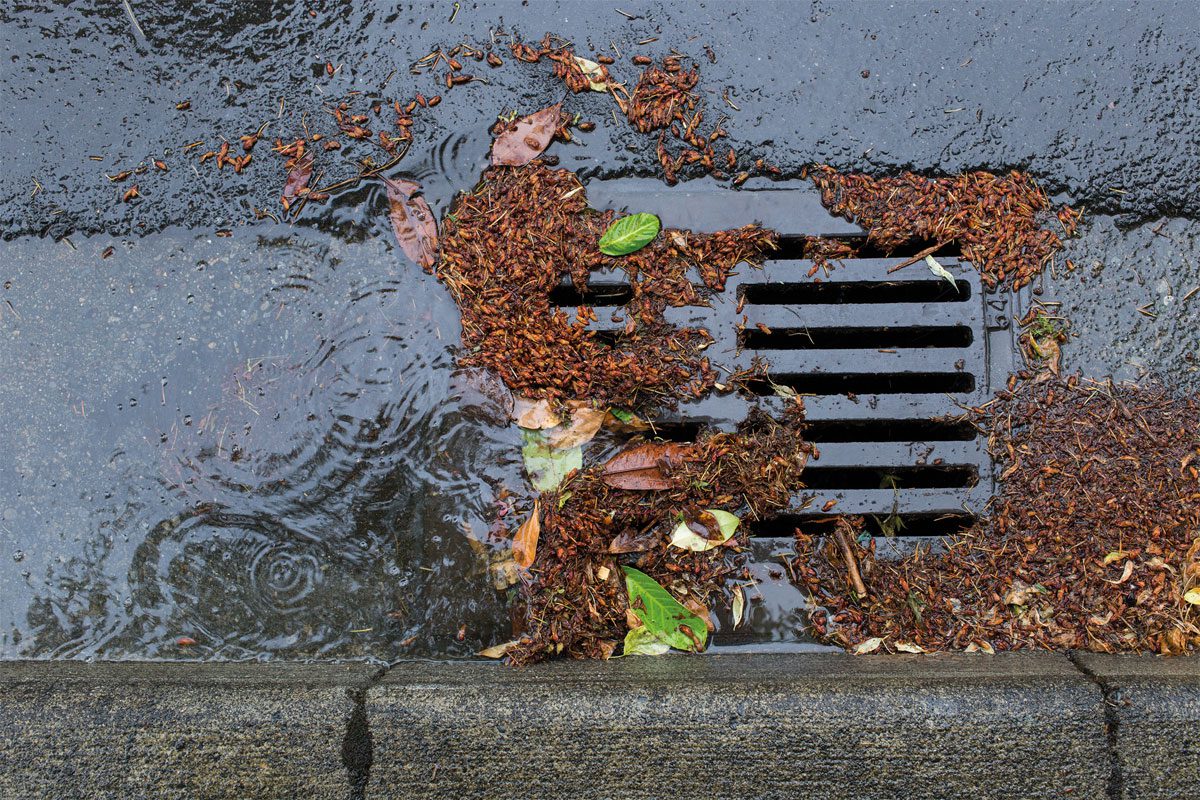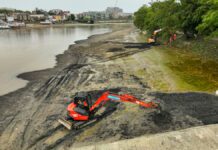Monitoring projects that collect and analyze urban runoff samples have just begun to characterize the dizzying array of contaminants, including tire- and vehicle-derived chemicals, per- and polyfluoroalkyl substances (PFAS), phosphorous, metals and many others, according to the American Chemical Society.
A feature article in a recent edition of the society’s news publication, Chemical & Enngineering News examines how chemists are identifying pollutants in urban stormwater, and how the compounds might be kept from entering the environment.
Unlike wastewater and industrial effluent, which flow in large quantities from specific locations, runoff typically enters water bodies from many small sources.
Efforts to reduce pollution from urban stormwater include rain gardens, stormwater ponds and other systems that use soil and vegetation to capture stormwater and filter pollutants. Adding iron shavings, biochar or microbes to rain gardens can boost their ability to remove contaminants. However, rain gardens and similar systems were designed to last only 20–30 years, and researchers must find ways to refresh, rebuild or update the constructions. Another option is permeable pavement that allows stormwater to drain into the ground, diluting it before it reaches waterways. Some experts say that a smarter approach would be to address the pollutants at their source — working with manufacturers to reduce the variety of chemicals they use, develop less toxic replacements, reduce the shedding of contaminants or find ways to capture pollutants before they enter the environment.







